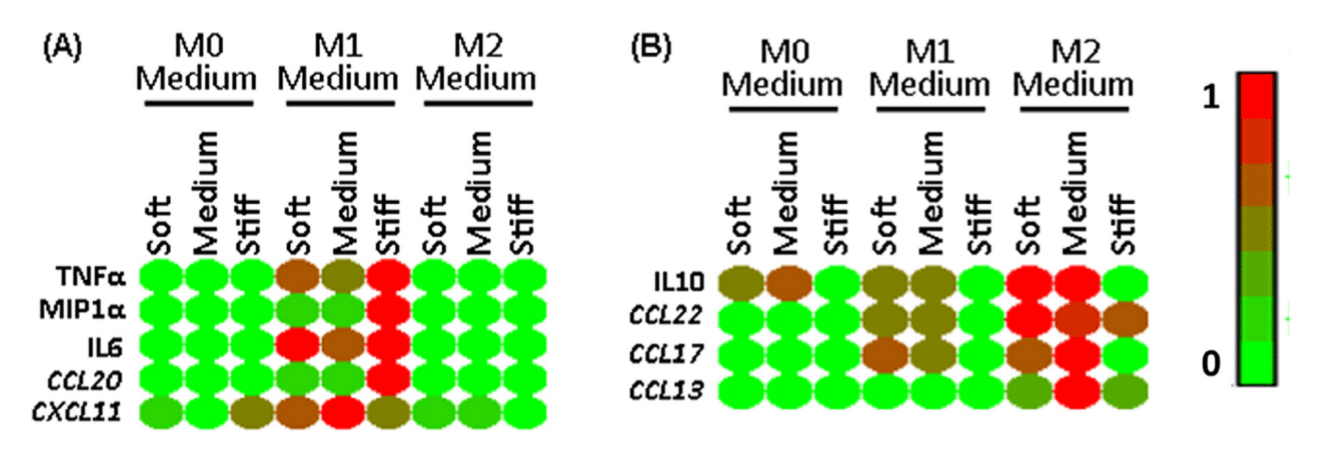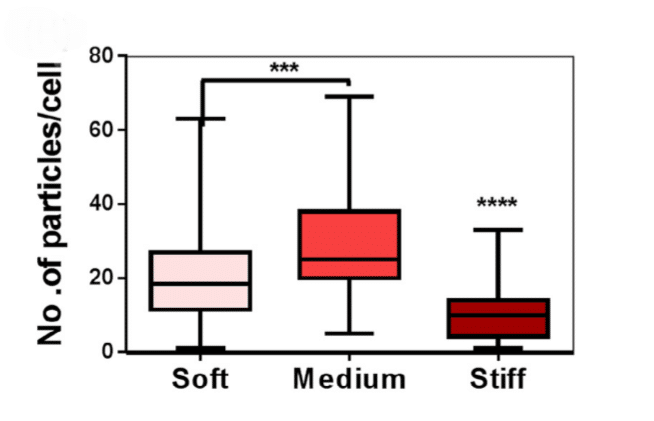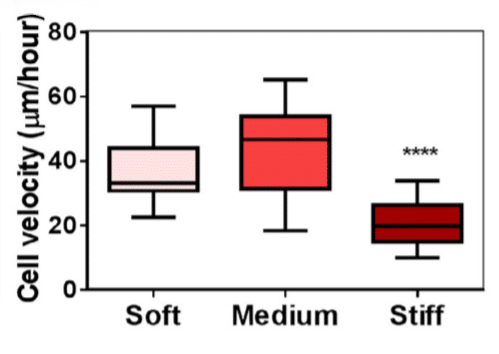Macrophage polarization
Modulation of macrophage phenotype with substrate stiffness
Modulation of macrophage phenotype with substrate stiffness
Regulation of the functional phenotype
Up to now, it was thought that cytokines and chemokines were the primary regulators of macrophage behavior. However, biophysical cues are also involved in this process.
Using 4Dcell gels, macrophages adapt their polarization state, functional roles, and migration mode according to the stiffness of the gel.
Stiff gels prime macrophages towards a pro-inflammatory phenotype with impaired phagocytosis and promote a podosome-dependant slow mesenchymal migration mode, whereas soft gels primes macrophages towards an anti-inflammatory highly phagocytic phenotype and promote a podosome-independent fast amoeboid migration.
Phenotype depends of the stiffness
Macrophages polarize into pro-inflammatory phenotype represented by proteins (TNFa, MIP1a,IL6) and genes (CCL20, CXCL11) or anti-inflammatory phenotype represented by proteins ( (IL10 ) and genes (CCL22, CCL13, CCL17) based on substrate stiffness.

Sandwich ELISA (bold) and Quantitative RT-PCR (bold italics) for pro- or anti-inflammatory markers.
Macrophage phagocytosis is increased in soft and medium substrate.


Confocal microscopy images of macrophage phagocytosis of 1 mm latex beads (green) on soft, medium, and stiff gels and quantification.
Nuclei are in blue, actin in purple.

Quantification of the mean velocity of macrophages in mm/hour.
Sridharan, R., et al. (2019). Acta biomaterialia, 89, 47-59.